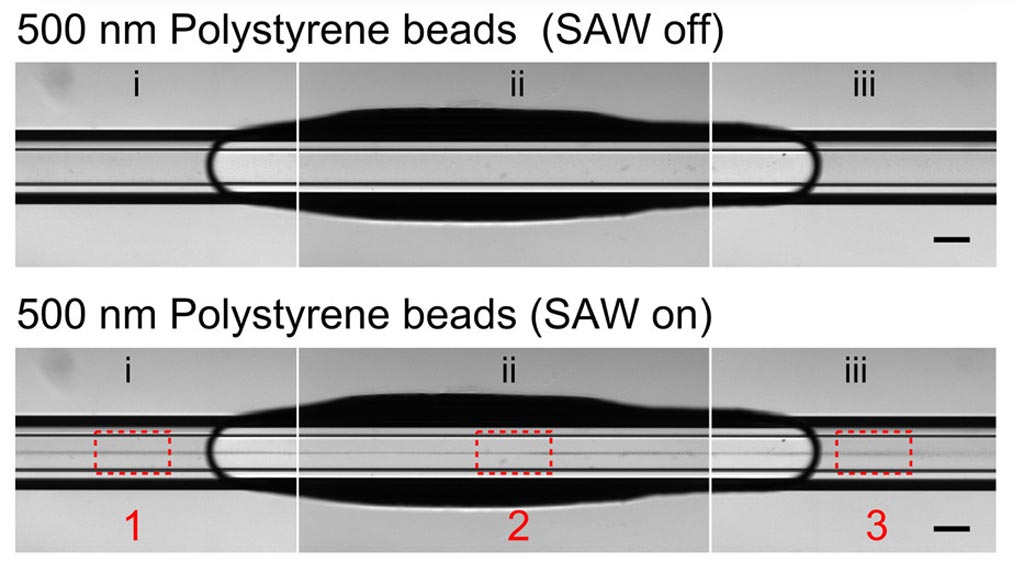Immunoassay Device Based on Acoustic Vortex Nanoparticle Enrichment
By LabMedica International staff writers
Posted on 09 Feb 2017
An inexpensive acoustic transducer is the key to a novel immunoassay that may eventually be combined with a smartphone camera to form a platform for the rapid detection of diagnostic proteins in blood, urine, or saliva samples.Posted on 09 Feb 2017
Investigators at Duke University developed an acoustic-fluidic chip capable of generating single vortex acoustic streaming inside a glass capillary through using low-power acoustic waves (only five volts was required). The single vortex acoustic streaming that was generated, in conjunction with the acoustic radiation force, was able to enrich submicrometer- and nanometer-sized particles in a small volume. Numerical simulations were used to clarify the mechanism of the single vortex formation and were verified experimentally, demonstrating the focusing of silica and polystyrene particles ranging in diameter from 80 to 500 nanometers.

Image: A sample of 500 nanometer particles in solution. In the top image, the acoustic whirlpool device was turned off. The bottom image shows that when the device was turned on, the nanoparticles were concentrated to the point of becoming visible as a dark line down the center of the chamber (Photo courtesy of Duke University).
In a proof-of-principle study, the acoustic-fluidic chip was used to perform an immunoassay in which nanoparticles that captured fluorescently labeled biomarkers were concentrated in a long, thin glass vial to enhance the emitted signal.
“Diagnosis impacts about 70% of healthcare decisions,” said senior author Dr. Tony Huang, professor of mechanical engineering and materials science at Duke University. “If we can improve the quality of diagnostics while reducing its costs, then we can tremendously improve the entire healthcare system. My goal is to create a small diagnostic device about the size of a cell phone that can autonomously separate biomarkers from samples. With this vortex technology, the biomarkers could then be concentrated enough to see with a simple camera like the ones found in today’s cellular phones.”














